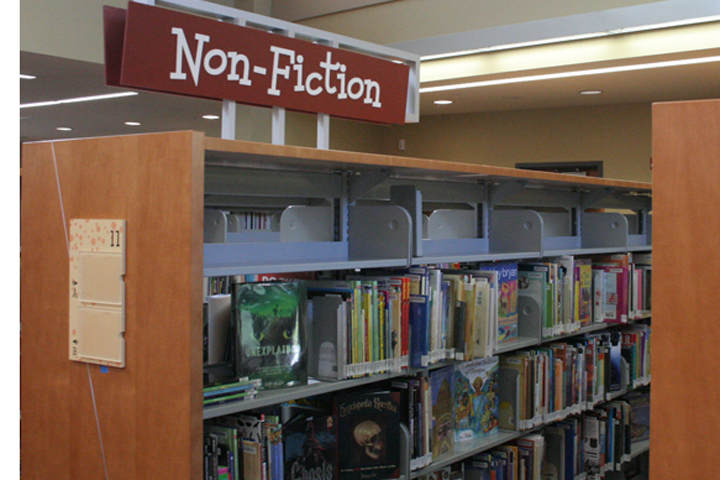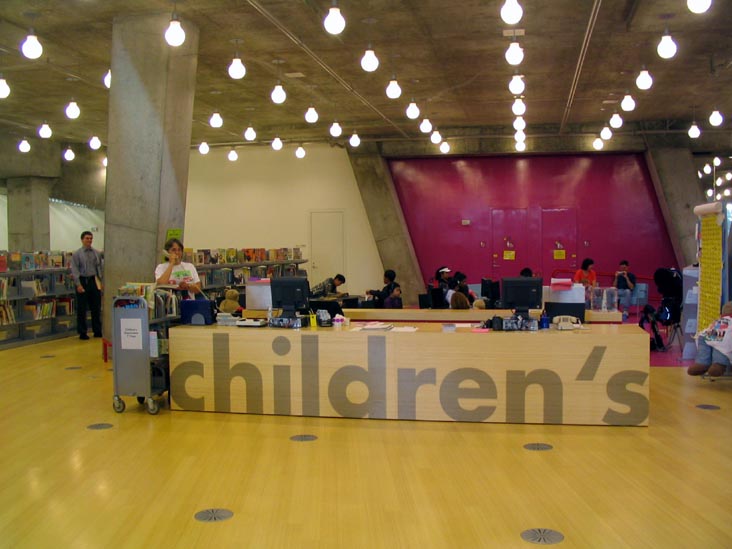Context is everything.
When it comes to sharing a message, gleaning something from the environment, or just generally maneuvering your way through modern society we have a number of implicit messages to guide you along your way. Depending on our context, signs and symbols can vary in their meaning- arrows, red lights, green lights, flashing lights, and combinations of all of these things and many more all have very specific meanings for us depending on where we are and what we're doing. Then we also have the explicit content practically shouting at us, "I can't make this any clearer to you!" Sometimes we mess up though- sometimes subtlety is lost or information is misinterpreted.
In the library setting, the context and associations we have with libraries suggest to us that we should probably speak with an "inside voice." Rarely is there ever a clear sign posted for patrons...
Except for in some very specific locations I can think of in academic libraries...
It's just common sense in a lot of ways. If we see several people working quietly and intently with materials we get the hint. We interpret the context and know to keep it down- and if not, we all know what this means:
 |
| (be quiet) |
 |
| (it's a secret, don't tell) |
| A technology center designed for group work around a computer |
 |
| A space for independent work |
 |
| A larger view of an academic library with tables for group work, individual seats, and study carrels |
 |
In the age of digital technology, there have to be better ways for us to direct our patrons- to provide them a map of sorts- to the materials and information they seek. I can remember struggling when I was younger to find materials on a given topic- like astronomy- and exhausting the resources in the youth area and seeking out the "adult" materials before long. Then also, there are broad subjects- contributions of Italian culture- that patrons may be interested in researching. Sure, you can search the catalog to locate items, but what if we were to create a technological resource map that could be accessed by patrons and guide them to the materials in a variety of library areas (cooking, travel, history, literature, music- all of which were relevant to the example topic). At times, what we need most is a personalized road map to lead us where we want to go. I would love to develop something like this- an app for phones or tablets, that could access the database of library materials and highlight areas for resources. My particular niche would be in improving accessibility and intuitive browsing/searching. All of this, of course, would rely on the book information and keywords containing information pertinent to the goals of our patrons- something achievable by social tagging.
In Weinberger's chapter "What Nothing Says," the subject of tags comes up again in reference to gleaning the kinds of implicit and explicit meaning I was referring to above. The suggestion is that tags can only provide us meaningful implicit knowledge when the users generating them have a transparency in their information sharing. While transparency itself is a very hot topic for debate, I must admit that in the past several weeks the more I have learned about open access, social sharing, and the efficacy of "folksonomy," I am much more interested in seeing a greater amount of transparency in this digital world. - Although, there are some areas in which transparency should NOT be expected or encouraged by any means for the sake of safety and privacy. Data collection is good, but not always data sharing. Privacy cannot be ignored.-
With greater transparency we are better able to provide the implicit information needed in order to identify more relationships between data. The more we connect the data and uncover the implicit information the more we are able to mirror the physical world in the digital world and increase our ease of use, create a space for intuitive searching, and effective browsing. When everything is truly miscellaneous, systems of classification will be able to give way to every individual user and their ability to create their own meaningful structures. The consumers will become the producers, and in social sharing and open access we will all be able to maneuver effectively... some day.




This got me to thinking about a library catalog that worked like All Recipes "Inspire Me" feature. Instead of main course, appetizer, side dish, the user would select a genre or topic. Then add other information equivalents like cuisine type, ingredients, time required, cooking style, etc., so that a search for me would look something like: Science Fiction, contemporary, dystopian story line, award winner, etc. Hmm, looks like colon classification.
ReplyDelete